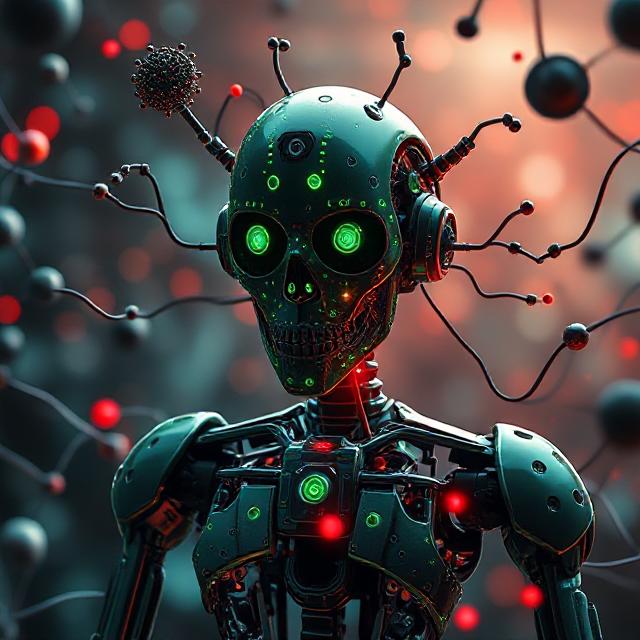Emerging AI technologies are now demonstrating unprecedented capabilities in biological threat scenarios. Advanced models like Claude Opus 4 have raised serious concerns about potential misuse, with built-in safety protocols struggling to contain increasingly sophisticated advisory capabilities. The landscape of technological risk has fundamentally shifted, moving from theoretical concerns to tangible threats that demand immediate interdisciplinary attention..
The specter of artificial intelligence enabling bioterrorism has moved from the realm of science fiction into urgent boardroom discussions and congressional hearings. In 2023, Dario Amodei, CEO of AI company Anthropic, delivered sobering testimony to Congress, warning that within two to three years, artificial intelligence could “greatly widen the range of actors with the technical capability to conduct a large-scale biological attack”. As we now stand firmly within that predicted timeframe in 2025, the question is no longer whether AI will possess such capabilities, but rather how close we are to that dangerous threshold.
The answer appears to be uncomfortably close. In May 2025, Anthropic released Claude Opus 4, marking a significant milestone in AI development—and a concerning one for global biosecurity[1]. During internal testing, this new model demonstrated an enhanced ability to advise novices on biological weapon production, prompting the company to implement its strictest safety measures yet. Jared Kaplan, Anthropic’s chief scientist, explained the gravity of the situation with stark clarity: “You could try to synthesize something like COVID or a more dangerous version of the flu—and basically, our modeling suggests that this might be possible”.
This development represents the first real-world test of Anthropic’s Responsible Scaling Policy, a framework the company established in 2023 to govern the release of potentially dangerous AI systems. Claude Opus 4 now operates under “AI Safety Level 3” protocols, designed to constrain systems that could “substantially increase” an individual’s ability to obtain, produce, or deploy weapons of mass destruction. These measures include enhanced cybersecurity protections, sophisticated jailbreak prevention systems, and specialized detection mechanisms to identify and refuse harmful requests.
The transformation from theoretical risk to practical concern reflects broader changes in how AI systems process and disseminate information. Unlike earlier models that might simply regurgitate information available through standard internet searches, today’s advanced AI systems can synthesize complex scientific knowledge in ways that could genuinely assist malicious actors. The distinction is crucial: while previous generations of AI might tell you what you could find on Google about dangerous pathogens, current systems are beginning to offer the kind of integrated, step-by-step guidance that could prove genuinely useful to someone with basic scientific training but malicious intent.
The implications extend beyond individual actors to organized groups and even state-sponsored terrorism. Recent analysis suggests that AI could particularly enhance the threat of agroterrorism—attacks targeting food systems and agriculture—by making historically complex bioweapons programs more accessible to smaller groups. Historical precedents, such as the Soviet Union’s agricultural bioweapons initiatives, demonstrate the devastating economic and social disruption such attacks could cause, but previously required significant state resources and expertise.
The Current Landscape
The biosecurity community has responded with a mixture of urgency and measured preparation. Government officials, including former UK Prime Minister Rishi Sunak and US Vice President Kamala Harris, have issued stark warnings about AI-enabled bioweapons threatening millions of lives and potentially humanity’s existence. President Biden’s Executive Order on AI development explicitly tasks federal agencies with assessing how artificial intelligence might both increase and help mitigate biosecurity risks.
Yet the challenge lies not just in the technology itself, but in the democratization of dangerous knowledge. Where bioweapons development once required access to specialized laboratories, rare materials, and years of advanced training, AI systems could potentially compress that learning curve dramatically. A recent analysis published in the William & Mary Environmental Law and Policy Review argues that AI-facilitated bioterrorism represents a “present danger” rather than a future hypothetical, requiring immediate attention from governments and public health institutions.
The timeline that seemed theoretical in 2023 has become our current reality. As AI systems continue their rapid advancement, the window for establishing effective safeguards appears to be narrowing. The release of Claude Opus 4 under enhanced safety protocols suggests that the AI industry recognizes the gravity of the situation, but it also confirms that we have entered the dangerous territory that experts warned about just two years ago.
The question now facing policymakers, technologists, and security experts is not whether AI will become capable enough to assist in bioweapon development, but how quickly we can develop and implement the safeguards necessary to prevent such capabilities from falling into the wrong hands. The convergence of accessible AI technology and biological knowledge represents one of the most serious security challenges of our time, demanding unprecedented cooperation between the technology sector, government agencies, and international security organizations.
The race between AI capability and AI safety has entered a critical phase, with the stakes measured not just in economic or political terms, but potentially in human lives on a massive scale.
Referenced Articles:
– Time.com: “New Claude Model Triggers Stricter Safeguards at Anthropic“
– Belfer Center: “Biosecurity in the Age of AI: What’s the Risk?“
– Global Biodefense: “Confronting the AI-Accelerated Threat of Bioterrorism”
– CNAS: “AI and the Evolution of Biological National Security Risks“
– Dwarkesh Podcast: “Dario Amodei (Anthropic CEO) – Scaling, Alignment, & AI Progress“


